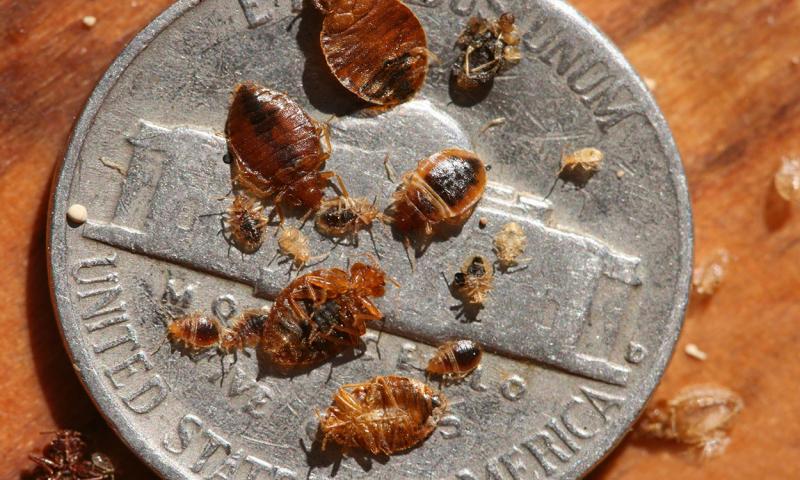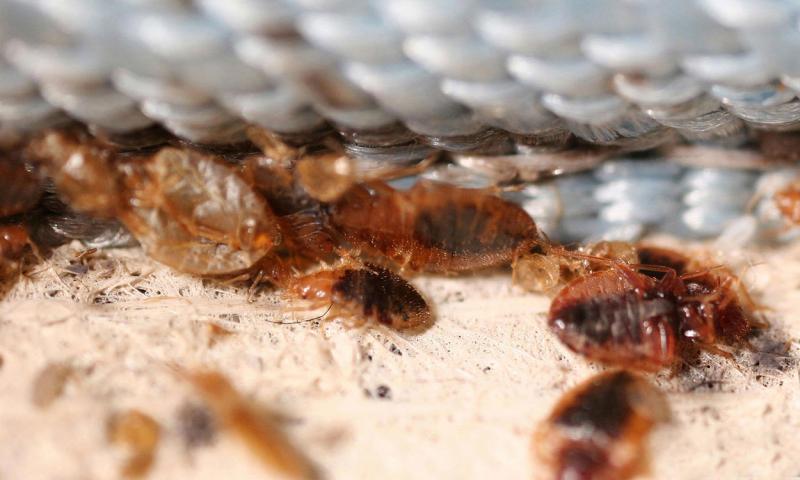Originally Submitted: June 16, 2021
When it comes to household pests, bed bugs can make almost anyone cringe. These tiny, vampire-like critters are pests of humans and can become a persistent problem when they infest homes. It is important to remember that bed bugs do not vector any diseases to humans. However, the level of irritation associated with bed bug bites varies from person to person. Some people experience redness and swelling around the bite, while others may not exhibit any symptoms at all.
There are several insects and other arthropods that are commonly misidentified as bed bugs, including bat bugs, carpet beetles, ground beetles and ticks. We’ve received many bat bug samples over the years. While bat bugs look very similar to bed bugs, they are indicative of a different kind of problem (bats) and require different management. It is important to always identify a pest properly so that the appropriate treatment can be used. In some cases, people are hesitant to confirm a bed bug case or reach out for help, because they are ashamed of the problem. It’s important to remember that bed bugs can infest anyone’s home and can be picked up just about anywhere.
Profile

Bed bugs are small, flat, bronze-colored bugs that feed on blood (Figure 1). They are attracted to people, because they require human blood for nutrition. Keep in mind that it is impossible to diagnose a bed bug infestation from only a bite or skin lesion. Seek medical attention if you have skin irritation that requires treatment.
Bed bugs get their name because they tend to gather in areas where people spend an extended period of time (e.g., bedrooms). They have three main life stages, which are the egg, nymph and adult. Bed bugs typically grow to about the size of an apple seed and all life stages are visible with the naked eye. However, magnification is useful for observing the eggs (which are cloudy white) and first instar nymphs (which are almost clear until they feed for the first time).
Prevention and Management

The initial step in bed bug management is preventing them from entering your home in the first place. Infestations in single family homes begin when bed bugs hitchhike on items, such as luggage or furniture, and are brought into the home by accident. Bed bug populations in multi-unit housing structures have an additional level of complexity, as bed bugs can travel between walls to neighboring units.
Traveling and staying at a place that has bed bugs can lead to the bugs hiding out in your clothes or luggage and coming home with you. Therefore, it is a good idea to take extra precautions while on the road by checking for bed bugs on mattresses, bedframes and other furniture before spending the night somewhere (Figure 2). Also, avoid putting your clothing in dresser drawers, and give your luggage a once over with an extra sticky lint roller when you return home. If you suspect that you stayed at a place infested with bed bugs, immediately wash and dry all the clothes you took with you on high heat, even if you didn’t wear them. Alternatively, clothes and luggage can be placed in a freezer for a few days to kill any potential hitchhiking bed bugs.
Many times, people will dispose of furniture because of a bed bug infestation. This is not recommended, because it can potentially spread bed bugs to new places and it will not get rid of the problem. Furniture can be treated, mattresses and box springs can be encased and you do not need to incur the additional cost of replacing those items. Bed bugs also hide in many areas of the home, including between walls, behind baseboards, pictures or other hanging decorations. Therefore, not all of the bed bug populations will be affected by switching to new furniture.
If bed bugs are confirmed in a dwelling, thorough and deliberate management action is necessary to prevent them from becoming widespread. Bed bugs are often initially found in bedrooms. However, they can also be found in living rooms or wherever else people are spending a lot of time. No single method of management is successful on its own, so it is important to implement a strategy that uses several different control methods. If possible, obtain quotes from more than one pest control professional before committing to a treatment plan.
First, carefully inspect your home and confirm the identity of any suspected bed bugs. Removing clutter and quarantining infested clothing/bedding that isn’t being used is good preparation for professional treatment. Anything that can be washed and dried can then be bagged and secured until after the bed bugs are eliminated. Bed bugs can be physically removed with a vacuum. If you use a vacuum, make sure to empty the contents of the canister or bag into the trash outside of the dwelling. The act of vacuuming does not kill insects, it just removes them from a surface. Barriers like plastic encasements can also be used on mattresses and other furniture to help deter re-infestation and make bed bugs easier to spot. Interceptor traps can be used under the feet of beds and sofas to monitor bed bug activity and determine whether additional treatments are necessary.
In rental situations, especially ones that share walls, reviewing the lease may be necessary. Reinfestation through shared walls is possible, so continuing to monitor with interceptor traps is recommended after treatment is complete.
If you have questions or concerns regarding bed bugs, please contact your nearest SDSU Extension entomologist for more information.


